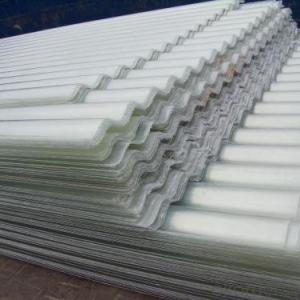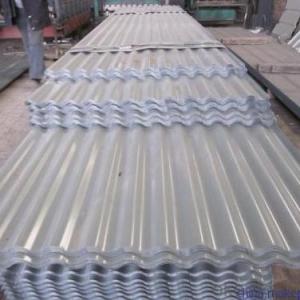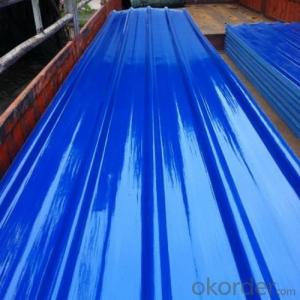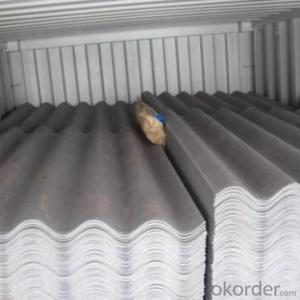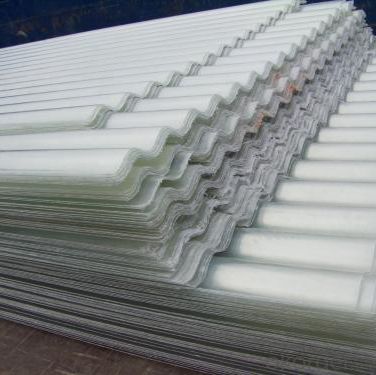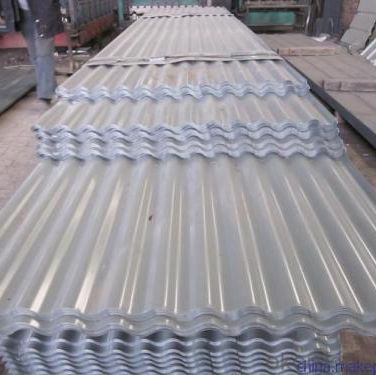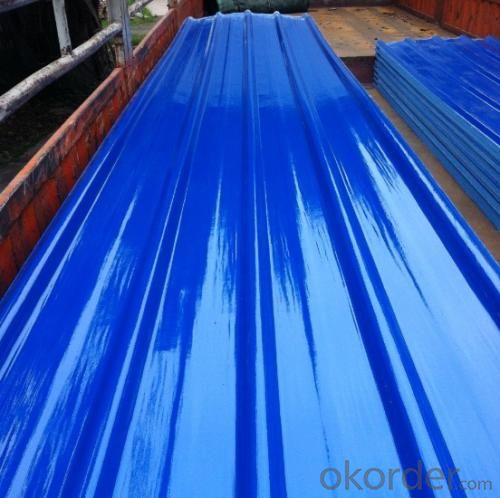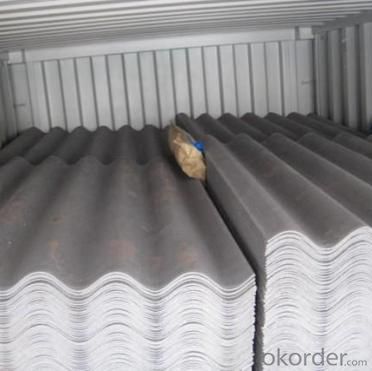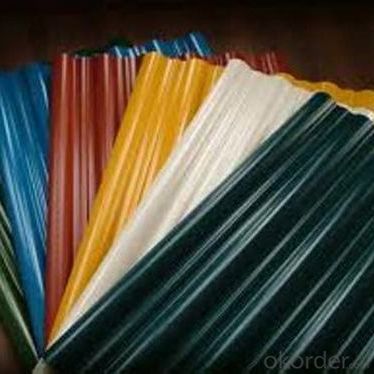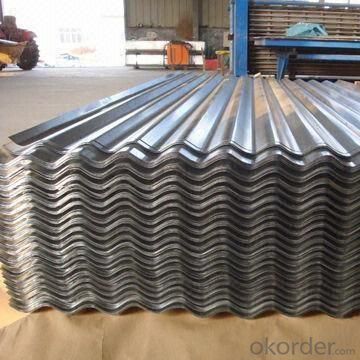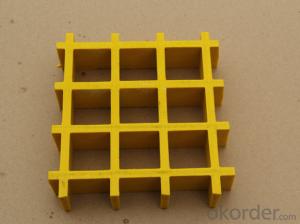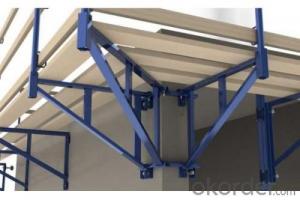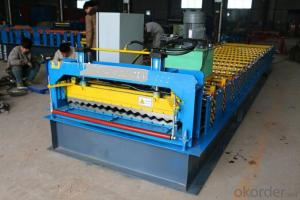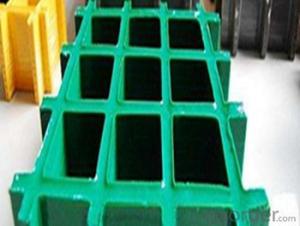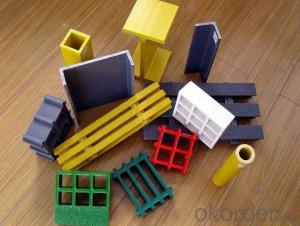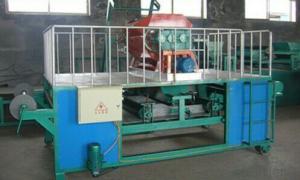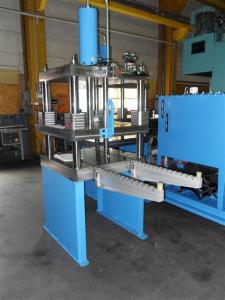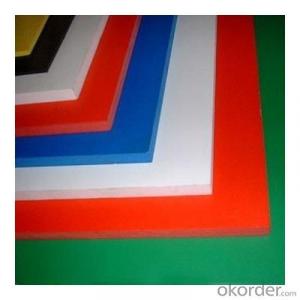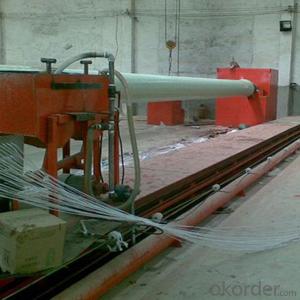FRP Pultrusion Profiles - Anti-Corrosion, Anti-Rust, High-Quality FRP Pultruded Grating
- Loading Port:
- Tianjin
- Payment Terms:
- TT OR LC
- Min Order Qty:
- 20000 m.t.
- Supply Capability:
- 100000 m.t./month
OKorder Service Pledge
OKorder Financial Service
You Might Also Like
Specification
PRODUCT DESCRIPTION
Pultruded grating is made by a particular assembly process, which using “I” shape as its main load-bearing and special rod to go through the bearing bar. Pultruded grating include the standard grating and the custom grating, the custom grating can be designed to meet customer’s requirement or special using condition by changing the shape, size and space of the bearing bars, the surface can be covered with lozenge panel, grit panel, or added the anti-slippery sand directly.
FRP pultruded grating has the most characteristics of molded grating, but it has its distinct advantages, it has very high fiberglass content in the loading direction, so it has very high load capability, it has more superiority when used at wide span, so that the basic support will be decreased and the project cost will be reduced accordingly.
SPECIFICATION
Thickness (mm) | Bar width (mm) | Open space (mm) | Open rate (%) | Approx weight (kg/m |
25.4 | 15.2 | 22.8 | 60 | 13.2 |
25.4 | 15.2 | 15.2 | 50 | 15.9 |
25.4 | 15.2 | 10.1 | 40 | 18.5 |
25.4 | 40 | 10.8 | 21 | 14.5 |
38.1 | 15.2 | 22.8 | 60 | 15.8 |
38.1 | 15.2 | 15.2 | 50 | 19.1 |
38.1 | 15.2 | 10.1 | 40 | 22.4 |
50.8 | 25.4 | 25.4 | 50 | 16.6 |
50.8 | 25.4 | 12.7 | 33 | 21.1 |
CHOICE FOR PULTRUDED GRATING
Resin: GP resin, ISO resin, VE resin, Phenol resin
Color choice: Yellow, gray, green, custom color
Surface choice: Groove surface, grit surface, lozenge cover surface
FEATURES
a. Anti-corrosion and anti-rust
b. Light weight and high strength
c. Anti-flammable
d. Anti- fatigue
e. Safe and anti-slippery
f. Anti-ageing
g. Easy of maintenance
h. Excellent electromagnetism property
i. Good economic benefit
FIELDS SERVED
Sewage treatment,
water supply and drainage,
chemical industry,
oil industry,
power engineering,
pulp and paper,
construction engineering,
spinning, marine engineering.
APPLICATION
Operation terrace,
stair walkway,
ground floor,
trench cover,
sidewalk,
foot bridge,
equipment safety fence,
scaffold.
COMPANT DESCRIPTION
CNBM,China National Building Materials Group is a state-owned enterprise in charge of administrative affairs in china building materials industry. Established in 1984, CNBM is a large group corporation of building materials with total assets of 25 billion RMB and a total staff of 30,000.CNBM now owns 200 subordinating firms of solely owned and joint-venture companies.
CNBM International Corporation is one subsidiary of CNBM, we focus on offering good-quality products,professional service and complete solution to our customers. Strong delivery capacity, advanced technology& management, strong financing capability and excellent after-sale service are our advantages in sharing international market.
FAQ
1.Q:Are you factory or trading company ?
A:We are Factory produce FRP machines and FRP products.
2.Q:If can customized by customers requirements?
A:yes,we can produce the machine with customized size.
3.Q:How about the payment?
A:We accept any kind of payment.
4.Q:What is the guarantee?
A:Gurantee is one year.
5.Q:If you can training?
A:yes ,we can training in our factory also can send engineers to your factory training.
PICTURES


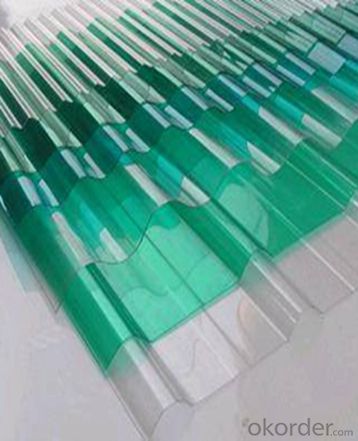
- Q: Are FRP pultrusion profiles resistant to jet fuel?
- Yes, FRP pultrusion profiles are generally resistant to jet fuel.
- Q: Can FRP pultrusion profiles be used in the transportation and logistics industry?
- Yes, FRP pultrusion profiles can be used in the transportation and logistics industry. These profiles offer a lightweight and high-strength alternative to traditional materials like steel or aluminum. They are resistant to corrosion, have excellent dimensional stability, and can be customized to meet specific design requirements. FRP pultrusion profiles are commonly used in applications such as truck bodies, trailers, shipping containers, and infrastructure for transportation and logistics purposes.
- Q: Are FRP pultrusion profiles UV-resistant?
- Yes, FRP (Fiber Reinforced Polymer) pultrusion profiles are typically UV-resistant. This is because they are manufactured using a combination of reinforcing fibers, such as glass or carbon, and a polymer matrix, such as polyester or vinyl ester. These materials are inherently resistant to UV radiation, which means that FRP pultrusion profiles can withstand prolonged exposure to sunlight without significant degradation or loss of mechanical properties. However, it is important to note that the specific UV resistance of FRP pultrusion profiles can vary depending on the type and quality of the polymer matrix used in their construction. Therefore, it is advisable to consult the manufacturer or supplier for detailed information on the UV resistance of specific FRP pultrusion profiles.
- Q: Can FRP pultrusion profiles be used in the agricultural and farming industry?
- Absolutely, FRP pultrusion profiles are indeed applicable in the agricultural and farming sector. Recognized for their exceptional strength, durability, and corrosion resistance, these profiles are highly suitable for outdoor and challenging environments typically found in this industry. A variety of agricultural and farming applications can benefit from these profiles, including: 1. Fencing and enclosures: By employing FRP pultrusion profiles, strong and enduring fences, gates, and enclosures can be created for safeguarding livestock and crops. These profiles possess resistance against rot, rust, and insect damage, ensuring reliable protection for animals and crops. 2. Structural components: Agricultural buildings, sheds, and greenhouses can utilize FRP pultrusion profiles as structural components. Thanks to their impressive strength-to-weight ratio, lightweight and durable structures can be constructed, capable of withstanding extreme weather conditions. 3. Irrigation systems: FRP pultrusion profiles can be harnessed for the construction of irrigation systems, including pipes, channels, and culverts. These profiles are non-corrosive with a smooth interior surface, reducing friction and improving water flow efficiency. 4. Equipment support and framing: Various agricultural equipment, such as conveyors, platforms, and machinery, can benefit from the support and framing provided by FRP pultrusion profiles. Their superior strength and stiffness make them suitable for heavy-duty applications. 5. Animal housing and equipment: Animal housing and equipment, such as pens, stalls, and feeding troughs, can be constructed using FRP pultrusion profiles. These profiles offer resistance against chemicals, moisture, and UV radiation, resulting in a long lifespan and low maintenance requirements. In conclusion, the outstanding mechanical properties, resistance to environmental factors, and versatility offered by FRP pultrusion profiles make them an excellent choice for the agricultural and farming industry.
- Q: What is the dimensional stability of FRP pultrusion profiles?
- FRP pultrusion profiles exhibit a remarkably high level of dimensional stability, owing to the unique structural characteristics of FRP materials and the pultrusion manufacturing process. To create FRP pultrusion profiles, continuous fibers, such as glass or carbon, are drawn through a resin bath and then heated die. The resin, typically a thermosetting polymer, undergoes a chemical reaction during curing to transform into a rigid and durable material. The pultrusion process ensures an even distribution and alignment of fibers within the profile, resulting in a remarkably uniform and consistent material. This uniformity significantly contributes to the dimensional stability of FRP pultrusion profiles. In addition, the thermosetting nature of the resin matrix ensures exceptional dimensional stability. Once cured, the resin retains its shape and dimensions, even when subjected to varying temperature and humidity conditions. Consequently, FRP pultrusion profiles are resistant to warping, shrinking, or expanding, issues commonly encountered with materials like wood or metals. The exceptional dimensional stability of FRP pultrusion profiles makes them exceptionally well-suited for a wide range of applications that demand precise and consistent dimensions. These profiles are widely used in industries such as construction, infrastructure, transportation, and marine, where their ability to maintain their shape and dimensions over time is essential for long-term performance and structural integrity.
- Q: What is the impact resistance of FRP pultrusion profiles?
- The impact resistance of FRP pultrusion profiles is generally high due to the inherent strength and durability of the fiberglass reinforcement. The specific impact resistance may vary depending on factors such as the resin type, fiber orientation, and manufacturing process. However, FRP pultrusion profiles are known to exhibit excellent resistance to impacts and can withstand heavy loads and external forces without experiencing significant damage or deformation.
- Q: Can FRP pultrusion profiles be used in the telecommunications and data communication industry?
- Indeed, the telecommunications and data communication industry can utilize FRP (Fiber Reinforced Plastic) pultrusion profiles. These profiles possess numerous advantages that render them appropriate for incorporation in this particular sector. First and foremost, FRP pultrusion profiles exhibit exceptional electrical insulation properties, rendering them perfect for applications in the telecommunications and data communication industry where minimizing electrical conductivity is imperative. FRP profiles do not conduct electricity, thereby ensuring the absence of interference or grounding issues that could potentially disrupt data transmission. Secondly, FRP pultrusion profiles are both lightweight and robust, resulting in a high strength-to-weight ratio. This characteristic makes them well-suited for the construction of communication towers, antenna supports, and satellite dish mountings. In these applications, the profiles must withstand environmental stresses such as wind loads. Moreover, FRP profiles exhibit outstanding corrosion resistance, a crucial attribute in the telecommunications and data communication industry where equipment is frequently exposed to harsh outdoor environments. Unlike traditional materials like steel or aluminum, FRP profiles do not rust or corrode, thereby guaranteeing the longevity and reliability of the infrastructure. Furthermore, FRP profiles can be easily customized and manufactured in various shapes and sizes to meet the precise requirements of telecommunications and data communication applications. This flexibility enables the design and construction of intricate structures capable of accommodating different equipment and technologies. In summary, FRP pultrusion profiles provide a multitude of advantages that render them highly suitable for application in the telecommunications and data communication industry. Their electrical insulation properties, lightweight yet strong nature, corrosion resistance, and design flexibility make them a dependable choice for supporting infrastructure in this sector.
- Q: How do FRP pultrusion profiles handle compression loads?
- FRP (Fiber-Reinforced Polymer) pultrusion profiles handle compression loads in a unique and effective way due to their structure and material composition. Pultruded profiles are made by pulling continuous fibers, such as glass or carbon, through a resin bath and then through a heated die, where the resin is cured and the shape is formed. When it comes to compression loads, FRP pultrusion profiles exhibit excellent performance. The continuous fibers embedded within the resin matrix make the profiles highly stiff and strong, allowing them to effectively resist compressive forces. The fibers distribute the load evenly along the length of the profile, preventing localized failure and ensuring overall structural integrity. The fiber reinforcement in FRP pultrusion profiles also provides excellent resistance against buckling. Buckling is a phenomenon where a slender structural member fails due to excessive compressive loads causing instability. The high strength-to-weight ratio of the fibers helps prevent buckling and allows the profiles to withstand substantial compression forces without compromising their structural integrity. Additionally, the resin matrix in FRP pultrusion profiles plays a crucial role in handling compression loads. The resin provides a protective layer around the fibers, preventing them from being damaged or fractured under compressive forces. It also acts as a load transfer medium, distributing the compressive load to the fibers, which then carry the load throughout the entire profile. Overall, FRP pultrusion profiles are well-suited for handling compression loads due to their fiber reinforcement and resin matrix. They offer high strength, stiffness, and resistance to buckling, making them an ideal choice for a wide range of applications where compression loads are a concern.
- Q: Can FRP pultrusion profiles be used in the construction of train or subway platforms?
- Yes, FRP (Fiber Reinforced Polymer) pultrusion profiles can be used in the construction of train or subway platforms. FRP pultrusion profiles are made of a combination of reinforced fibers and a polymer resin matrix, which gives them high strength and durability. These profiles are lightweight, corrosion-resistant, and have excellent mechanical properties, making them suitable for various applications in the construction industry. When it comes to train or subway platforms, FRP pultrusion profiles can be used for various structural components such as handrails, guardrails, gratings, and decking systems. These profiles provide a non-conductive and non-magnetic solution, which is essential in railway environments to prevent interference with electrical and signaling systems. Furthermore, FRP pultrusion profiles offer a high level of customization, allowing them to be tailored to specific project requirements. They can be manufactured in various shapes, sizes, and colors to meet the aesthetic and functional needs of train or subway platforms. Moreover, FRP pultrusion profiles have excellent resistance to environmental factors such as moisture, chemicals, and UV radiation. This resistance ensures that the profiles remain durable and maintain their structural integrity over time, even in harsh and corrosive conditions commonly found in railway environments. Overall, FRP pultrusion profiles are a reliable and cost-effective choice for the construction of train or subway platforms. They provide numerous advantages including strength, durability, customization options, and resistance to environmental factors, making them a suitable alternative to traditional materials in these applications.
- Q: Are FRP pultrusion profiles resistant to moisture?
- Yes, FRP (Fiber Reinforced Polymer) pultrusion profiles are highly resistant to moisture. The manufacturing process of FRP pultrusion involves impregnating fiberglass reinforcements with a resin matrix, typically polyester, vinyl ester, or epoxy. These resins are inherently moisture-resistant, making FRP pultrusion profiles suitable for various applications that involve exposure to moisture or humid environments. Unlike traditional materials like wood or steel, FRP does not absorb water, which eliminates the risk of swelling, warping, or corrosion. This moisture resistance is particularly advantageous in applications such as construction, infrastructure, and marine industries, where the profiles may be exposed to rain, saltwater, or high humidity. Additionally, the resin matrix used in FRP pultrusion can be further enhanced with additives or coatings to provide even greater moisture resistance. For example, UV inhibitors can be added to protect against degradation caused by sunlight exposure. Fire-retardant coatings may also be applied to meet specific safety requirements. Overall, FRP pultrusion profiles offer excellent resistance to moisture, making them a durable and reliable choice for various applications where moisture exposure is a concern.
Send your message to us
FRP Pultrusion Profiles - Anti-Corrosion, Anti-Rust, High-Quality FRP Pultruded Grating
- Loading Port:
- Tianjin
- Payment Terms:
- TT OR LC
- Min Order Qty:
- 20000 m.t.
- Supply Capability:
- 100000 m.t./month
OKorder Service Pledge
OKorder Financial Service
Similar products
Hot products
Hot Searches
Related keywords
